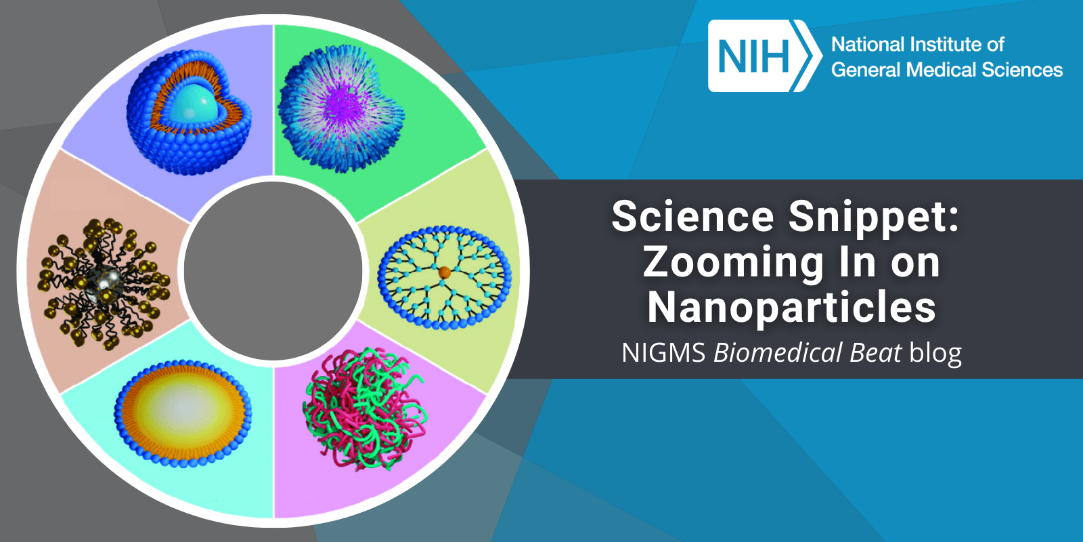The immune system is designed to closely monitor the body for signs of intruders that may cause infection. But what happens if it malfunctions? Overactive and underactive immune systems can both have negative effects on your health.
Continue reading “How Can the Immune System Go Awry?”Inspiring the Next Generation of Scientists Through CityLab

“Many of the students we work with don’t have access to a laboratory through their local schools. For them, CityLab is their first exposure to a laboratory environment—these are hugely important moments for these kids,” says Carl Franzblau, Ph.D., the founder of CityLab at Boston University (BU). CityLab was established more than 30 years ago as a science education outreach program for precollege students and teachers through a partnership between the Chobanian & Avedisian School of Medicine and the Wheelock College of Education & Human Development at BU.
“Since our first Science Education Partnership Award (SEPA) grant in 1991, our mission has been to inspire students to consider careers in the biomedical sciences and broaden the opportunities that are available to them,” says Carla Romney, D.Sc., the director of research for CityLab. Continuous SEPA funding since 1991 has allowed CityLab to fulfill its mission and provide students with state-of-the-art biotechnology laboratory facilities and curricula.
Continue reading “Inspiring the Next Generation of Scientists Through CityLab”Ring In the New Year With Basic Research
Empowering basic biomedical research, which focuses on understanding how living systems work, is one of NIGMS’ main goals. This type of research not only helps us learn how our bodies and those of other organisms function but also lays the foundation for advances in disease diagnosis, treatment, and prevention.
We’re excited to see what the upcoming year has in store for the field! In preparation, we’re highlighting what NIGMS-supported scientists had to say in 2023 about the many merits of basic research. Also check out the links to the Biomedical Beat posts that feature them if you haven’t already.
Continue reading “Ring In the New Year With Basic Research”Seeking Success in Science Through NIH-Funded Training

“What’s great about a career in research is that there are so many paths you can take. I get so excited for the future when I think about all the open doors ahead of me,” says Hasset Nurelegne, a senior at Emory University in Atlanta, Georgia. Hasset is majoring in neuroscience and behavioral biology (NBB) as well as English.
Since her first year on campus, Hasset has been an active participant in an NIGMS-funded program at Emory that aims to develop a diverse pool of scientists, the Initiative for Maximizing Student Development (IMSD) (which is now just for graduate students; the Maximizing Access to Research Careers [MARC] program is now available for undergraduates). The Emory IMSD has provided Hasset and other trainees with financial assistance for year-round research experiences and a support system for professional development skills and responsible conduct of research.
Continue reading “Seeking Success in Science Through NIH-Funded Training”Science Snippet: Zooming In on Nanoparticles

Nanoparticles may sound like gadgets from a science fiction movie, but they exist in real life. They’re particles of any material that are less than 100 nanometers (one-billionth of a meter) in all dimensions. Nanoparticles appear in nature, and humans have, mostly unknowingly, used them since ancient times. For example, hair dyeing in ancient Egypt involved lead sulfite nanoparticles, and artisans in the Middle Ages added gold and silver nanoparticles to stained-glass windows. Over the past several decades, researchers have studied nanoparticles for their potential uses in many fields, from computer engineering to biology.
A nanoparticle’s properties can differ significantly from those of larger pieces of the same material. Properties that may change include:
Continue reading “Science Snippet: Zooming In on Nanoparticles”What Is the Immune System?

What do antibodies, mucus, and stomach acid have in common? They’re all parts of the immune system!
The immune system is a trained army of cells, tissues, and organs that work together to block, detect, and eliminate harmful insults to your body. It can protect you from invaders like bacteria, viruses, fungi, and parasites.
Innate and Adaptive
The immune system is often thought of as two separate platoons: the innate immune system and the adaptive immune system. Although these two platoons have different jobs and are made up of soldiers with different specialties, they work together to prevent infections.
Continue reading “What Is the Immune System?”Award-Winning Safety Training Videos Showcase Inclusivity in the Lab
Virginia Commonwealth University’s (VCU’s) Center on Health Disparities and safety and risk management department in Richmond teamed up to develop a series of six lab safety training videos with supplemental funding to their NIGMS-funded Initiative for Maximizing Student Development (IMSD) program. The videos cover topics such as safety culture, biosafety, chemical safety, and emergency response, but what sets them apart is how they showcase diversity and inclusion in the lab.
The first video in the safety training series describes the importance of maintaining positive safety culture, which includes people’s perceptions and attitudes toward safety. This video, along with the other five, is on our NIGMS laboratory safety training and guidelines webpage.
Making Microprotein Discoveries With Alan Saghatelian

“There aren’t many professions that can provide this much opportunity for learning, especially when it comes to understanding how our bodies work. I really love what I do—I wouldn’t trade it for anything,” says Alan Saghatelian, Ph.D., a professor in the Clayton Foundation Laboratories for Peptide Biology at the Salk Institute for Biological Studies in La Jolla, California. From studying new facts and experimental techniques to adopting new ways of thinking, researchers never stop learning, and Dr. Saghatelian credits his love for learning and exploring as reasons why he’s perfectly suited for science. He’s used these passions to build a successful career in biochemistry.
From Chemistry to Biology
Dr. Saghatelian’s love for chemistry began when he was young. He was drawn to how predictable it could be: Mix two chemical compounds in the same way and they’ll always combine to form the same substance, as dictated by the rules of chemistry.
Continue reading “Making Microprotein Discoveries With Alan Saghatelian”What Is Antibiotic Resistance?

Bacteria can cause many common illnesses, including strep throat and ear infections. If you’ve ever gone to the doctor for one of these infections, they likely prescribed an antibiotic—a medicine designed to fight bacteria. Because bacteria can also cause life-threatening infections, antibiotics have saved many lives. However, the widespread use of antibiotics has fueled a growing problem: antibiotic resistance.
Antibiotic-resistant bacteria can survive some or even all antibiotics. Other microorganisms, including fungi, can similarly become resistant to the medicines that are used to treat them. Infections from these microorganisms affect many people and are difficult to treat. According to the Centers for Disease Control and Prevention, in the U.S. alone, resistant bacteria and fungi infect 2.8 million people each year, and more than 35,000 die as a result.
Continue reading “What Is Antibiotic Resistance?”Curiosity-Driven Science: Q&A With Saad Bhamla
What do worm blobs and insect pee have to do with human health? We talked to Saad Bhamla, Ph.D., assistant professor of chemical and biomolecular engineering at Georgia Institute of Technology (Georgia Tech) in Atlanta, to find out.
Q: What did your path to becoming a scientist look like?

A: I grew up in Dubai and did my undergraduate work in India, which is where I was first introduced to science. The science faculty members seemed to be having so much fun and would say things like “for the love of science,” but I couldn’t figure out what joy they were getting until I got a taste of it myself—then I was hooked. I like the idea that you can create a legacy doing science because someone can come along 100 years later and build on your work.
After undergrad, I went to Stanford University and earned my Ph.D. in the lab of Gerald Fuller, Ph.D., and then stayed at Stanford for postdoctoral work (postdoc) in the lab of Manu Prakash, Ph.D. In 2017, I joined the faculty at Georgia Tech. On paper, I’m a chemical engineer, but I describe myself as more of a biophysicist.
Continue reading “Curiosity-Driven Science: Q&A With Saad Bhamla”










